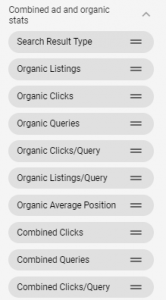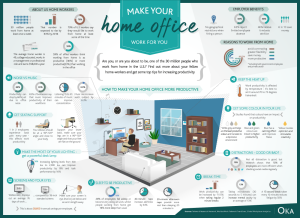Starting a side business isn’t as difficult as you might think. It requires planning, passion, and avoiding some pitfalls — but beyond that, you’ll learn as you go. Having a side business gives people the freedom they crave when it comes to finances.
In this guide, we’ll tell you more about how to start a side business, some tips to keep in mind, and plenty of information to empower you.
Table of Contents
- What is a side business?
- Potential pitfalls of starting a side business
- How to balance a side business and a full-time job
- How to start a side business
- Getting help with your side business
What is a side business?
A side business is also called a side hustle. It’s a job that you work outside of your daily 9 to 5 job that brings in extra income. A poll in 2017 reported that one-third of American workers had at least one side hustle.
A side business is not related to your day job at all. Most people will work their side job at night, weekends, or off-hours.
What’s the point of a side business?
The main reason to start a side business is to make more money. This is good news for anyone who wants to reach their financial goals faster.
For some, a side hustle is a small part-time job that they work outside of their usual full-time hours. This could be something like landscaping, babysitting, delivering pizzas, or waiting tables. In this case, there isn’t a lot that goes into developing your side hustle.
For many, a side business is a self-employed venture. This gives the everyday person an opportunity to be their own boss and get a taste of running a business. Some people like it so much that they end up turning their side business into a full-time job.
Who is a side business right for?
The truth is that a side business is right for almost everyone. If you have a little free time and you want to spend it making extra money, then you’ll find a side hustle that works for you.
The main reason that people start a side business is to get paid for doing something that they love. If you have a passion in your heart and you want to test the waters, you can keep your full-time job and start your own small business on the side. Doing so gives you a financial safety net and guarantees that your bills get paid while you build your business.
Potential pitfalls of starting a side business
It’s important that you start your operation above board. If you don’t take the proper steps when starting out, a simple mistake can cost you bigtime in a lawsuit. Avoiding these potential pitfalls of starting a side business is critical if you want to avoid legal trouble in the future.
Check your employment contract
Your day job probably had you sign some paperwork. Go through your files and find your employment contracts. There are three major clauses that you’ll want to look for:
- NDA: A non-disclosure agreement (NDA) is the legal way of keeping the company’s private information — well, private. It legally prohibits you from talking about specific information that you learn through your company. If intellectual property from your day job will be used in your side hustle and you signed an NDA, all your profits can get taken from you.
- Non-compete: Similar to an NDA, a non-compete clause can stop you in your tracks. In this clause, your employer will restrict what kind of side job you can have. It will explicitly describe the type of work you can’t do. It usually revolves around jobs that can steal business, compete, or put the company at a disadvantage. For example, a professional welder won’t be able to open their own personal welding shop if they signed a non-compete.
- Exclusivity: If there’s an exclusivity clause in your contract, then you will have to kiss your dreams of a side business goodbye. This clause blatantly prevents you from doing paid outside work while you’re working for the company. It doesn’t matter if it’s a competing business or something completely unrelated.
If your contract has any or all of these clauses, you’ll need to be very careful. You might have to get a new day job before taking on a side hustle. Beyond legally-binding clauses, there are also workplace policies that you have to keep in mind.
Learn your workplace policies
The HR department at your job should have shown you forms that had workplace policies on them. These are standard operating procedures for the office. Usually, they deal with using personal phones, emails, or social media while on the clock. They can even discuss using work computers for anything non-work related.
The result is usually that you can’t do any side hustle-related work while on the clock, with work resources, or on work property.
Even when you avoid these policies and the clauses discussed earlier, you’ll want to make sure you’re staying away from general conflicts of interest.
Avoid conflicts of interest
As you’re planning your side business, you’ll need to highlight areas that can be potential conflicts of interest. This is a term that means that your side business somehow gets in the way of your main job and hurts the company or your ability to perform. A lot of these are spelled out in your workplace policies.
An example of this is if your side business tries to recruit your coworkers or clients at your day job. This conflict is a big no-no and can result in a lawsuit. Setting up a competing shop across the street is another big conflict of interest.
A simple example that many people don’t think about is using your job’s resources to perform tasks for your side business. Something as small as checking your side hustle’s related email account while on the clock at your day job can put you in hot water.
Your side job should be completely separate from your full-time gig. If that’s the case, how are you supposed to balance the two?
How to balance a side business and a full-time job
To be very clear: balancing a side business and a full-time job can be challenging. Many people who drop their side hustle do so because of the time commitment and added strain on their resources. However, with the right mindset and planning, you can make your dream of starting a side business a reality.
Think about the hours and the required sacrifice
There are only so many hours in a day, week, and month. This is all going to boil down to time management and your willingness to sacrifice certain things.
Take a second and think about a typical week in your life. Outside of work, what activities are you doing: Seeing friends, sleeping, watching Netflix, investing time in your health and fitness?
When you look at your extra activities, think about what you’re willing to sacrifice. If you want to work 20 hours on your side business each week, you need to figure out where those 20 hours are coming from. Sacrificing sleep only works for so long. That means less time for yourself and less time to socialize.
For some, the costs outweigh the benefits. But If you’re deeply passionate about your side business, this may not feel like a huge sacrifice.
Set strict boundaries for your full-time job
Another way to get some extra hours in the week is to put your foot down in your full-time job. No more late hours at the office, coming in on weekends or accepting projects that suck away all your time in the hopes of getting that promotion.
A healthy work-life balance is essential before you can introduce a side business. An honest conversation with coworkers and management is a good idea at this stage.
How to start a side business
Everyone’s side business is unique to them. We’ll review ten tips that have helped people in the past. Pick and choose the ones that make sense for you and your industry. A little bit of planning will have a lasting impact on your side hustle (especially if you want to eventually scale it into your main hustle!).
1. Make up your mind
After reading about how hard it’s going to be and understanding that this will be a serious time commitment, ask yourself if you’re ready. None of this is going to work if you don’t make up your mind in the beginning.
Running your own side business can be a liberating way to explore your passion in a safe environment. With the income from your day job, you won’t be missing bills or struggling to stay afloat.
This step includes having a conversation with yourself — an honest one. Is this something you really want to do, and are you ready to put in the necessary work?
2. Figure out what you’re good at
Since your side business can be just about anything, try to figure out what you’re good at. If you already have an idea for a side business, think about how it plays to your strengths. For instance, if you’re good at math, love working with people, and like seeing people happy, maybe you could get into the world of personal finance.
Your side business should lean into your strengths and interests. It doesn’t have to be at all related to your day job. You’ll be following your passion here, not just dollar signs.
3. Make sure your idea is viable
Since you’re starting from scratch, take a second to consider the viability of your business idea. Take a look at the market and see if there’s a need for your product or services. Try to imagine what your side business will look like and how you’ll ultimately get paid for it.
The sad truth is that many side businesses don’t get the traction they deserve. This can be due to improper planning or a failure to find your niche. A good idea is to start small at first. It will help you to understand whether or not people will pay for your product.
For instance, If you want to be the next Yankee Candle, you can make a small batch before finding a manufacturing facility to jar a thousand candles for you. It may also help to start with an online storefront before committing to the costs of distribution or a brick-and-mortar storefront.
Slow and steady is a great business model when you’re first starting out. Because you have the luxury of already making money from your day job, there’s no need to rush the process and make mistakes.
4. Determine what makes your side business special
Try to determine what makes your side business special. This is part of the larger umbrella of “branding.” It sets you apart from your competition, helps people understand what your business is really about, and can boost your sales. At this point, you may want to do some basic market research to see how your side business fits into the larger landscape of your industry.
Some people start their business because there’s a gap in the market. Their new product fills the gap and creates a stream of revenue right away. Other people set up shop in a market that might be quite saturated, but they have a key characteristic that sets their product or service apart.
For example, take a look at Dunkin’ Donuts and Starbucks. Both are coffee shops, but you would never confuse the two. Dunkin’ focuses on low-cost, quick, simple coffees. Starbucks offers premium, highly customizable, unique coffees. Both are selling coffee, but they aren’t fighting over the same customer.
If you were to open a coffee shop, you would need to develop something that makes you unique. It has to be something other than speed or the ability to customize since these other two coffee shops have that covered. Alternatively, you can set up shop in an area that doesn’t have a Dunkin’ or Starbucks nearby. This is an example of filling a gap in the market.
You have a ton of options when it comes to setting your business apart. It’s even better if you can connect the unique aspect of your business to your personal strengths.
5. Set some goals
In this step, you’ll be spending time putting together goals. Goals need to be:
- Measurable. Trying to be “the best laundromat” isn’t a goal you can measure. You can turn the idea of being the best into a quantifiable goal by changing it to “having the highest-rated laundromat on Google in Palm Beach.”
- Attainable. Making a billion dollars in your first year probably isn’t going to happen. Setting unattainable goals will set you up for failure, leading to discouragement and tempting you to close your doors for good. Be reasonable about what your business can achieve and when.
- Tied to a date. Goals need to have specific dates that they’re associated with. For example, by April 2025, you may want to pass a certain amount in sales. This is measurable, attainable, and tied to a date. If you hit the goal early, pat yourself on the back. If you miss the deadline, try to understand what went wrong.
- Laid out in steps. Strong goal building starts with the finish line and works its way backward. Goals are stepping stones to get to the final solution. If you look at your revenue goals, they can step up incrementally until you hit your goal (i.e., $ 10 thousand, $ 100 thousand, $ 500 thousand, $ 1 million). In doing this, you’ll see what smaller things you need to accomplish before you can reach your ultimate goal.
- Your reason for starting a side business. Tie your goals to the reason for starting your side business. If you want financial security and freedom from the corporate world, you can set financial goals. If you want to be a household name, your goals can revolve around sales and customer satisfaction.
Besides avoiding legal issues, setting goals might be the most important step to start a side business. When you come up with some goals, it’s time to plan how you’ll achieve them.
6. Plan your initial week, month, and year
You can’t start a side business without planning and in this step, you’ll do even more planning. By putting pen to paper, you’ll hold yourself accountable and see how things are about to shape up. Spend a few hours and think about what the next year will look like. A strategy for this is to start big, then think small. Start with where you want to be on this day, next year. From there, work backward to find out what you have to do today — sort of like the goal planning you did in the last step.
Let’s say that you make artisanal pickles. In one year you want your pickles on the shelves of local markets and gift shops, to hit $ 10,000 in sales, and have a professional kitchen space. Okay, that’s a great start — what can you do today, this week, and this month to achieve that?
Today, you can start looking at shops that might carry your product and researching similar products. This week you can start making phone calls, make a business plan, and figure out how much money you’ll need upfront. This month you might start refining recipes, designing your labels, and researching how you’d like to price your pickles.
In this short example, you can see how this idea comes to life. You have short-term, medium-term, and long-term goals already. When you start physically planning them, you’ll see what goes into achieving each goal.
7. Learn the finances of your business
Even though it’s a side business, you still need a little financial planning. The first thing you should do to address your business expenses is open a business bank account. Keeping the money separate adds a layer of protection and helps you track how your side business is doing. All of your expenses and sales should come from a single account that isn’t used for anything else. Get ahold of a CPA or tax expert that can help you with your tax responsibilities.
Finally, put together a business budget and plan to give you a rough estimate of how much money you’ll be spending in the coming months or year.
Eventually, this idea transforms into knowing the price of manufacturing and shipping your product (or the cost of maintaining your tools and improving your skills if you’re offering a service), your selling price point, profits, overhead, and other financial expenses.
8. Let someone else handle the stuff you’re not good at
Letting someone else handle the things you’re not good at is an idea to keep with you as long as you’re running a side business. Nothing is forcing you to manage every aspect of your business. There are costs associated with bringing in extra help, but it can be worth it when you factor in time spent. It’s usually better to pay an expert to do something you’re bad at rather than struggling your way through it.
For instance, if you’re not sure how to build a professional website, get some help. The amount of time you’ll spend trying to figure it out will set you back a lot. There’s a reason why you go to a dentist for your dental work, after all — it’s a good idea to leave stuff like this to the pros.
9. Get plenty of feedback (and use it!)
You know how people say, “the customer is always right”? You’ll learn how true this statement is soon enough.
The reality behind the statement is that your business goes nowhere if people aren’t willing to buy your product. This step revolves around asking customers, potential customers, and competitors what they think about your business. You might have a skewed perspective about your side business, and a customer can help by telling you the truth. Instead of taking negative feedback personally, view it as a way to improve your business and hit your goals faster.
You can solicit feedback through surveys. Ask people whatever you want to know and gather their answers. More importantly, use their feedback. If everyone says that your product is overpriced and doesn’t work right, you can’t delete their surveys and ignore them. Adjust your price and revise your design — your customers will be happier and you’ll likely see increased growth.
10. Make sure you’re ready before you jump
Once you see some success after you start a side business, it can be tempting to go all in. But before converting your side hustle into a full-time gig, you should make sure you crossed some things off your list. Ensure that:
- Your finances are in order
- You have short-term and long-term goals
- Your plans are robust and well thought out
- There are no legal issues with your current employer
- Your business is viable, fills a need, and plays to your strengths
- People on your team will handle the parts of your business that you can’t
- You’re still committed to the initial mission of your side business
There’s no guarantee that your side business will be successful. It still requires a leap of faith and a lot of long-term commitment. This means that you may not feel 100% ready to jump at any given time, but don’t let that hold you back.
Getting help with your side business
Starting a side business involves a lot of steps. You’ll want to keep it legal, do plenty of planning, and avoid some pitfalls. If you can put in the necessary hours and effort, you’ll be on your way to a full-fledged, successful business in no time.
Business & Finance Articles on Business 2 Community
(53)







